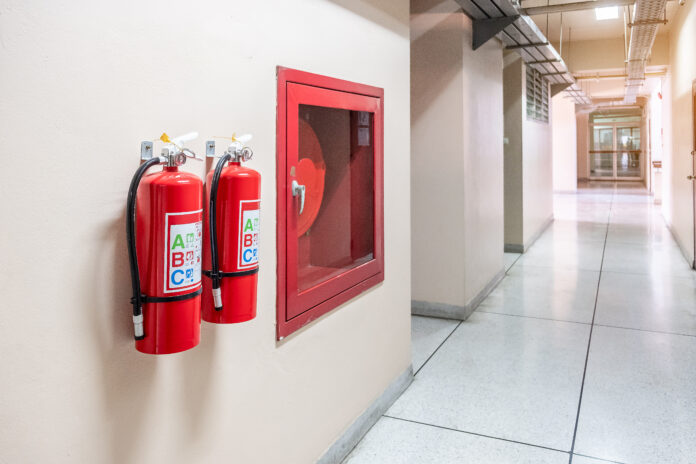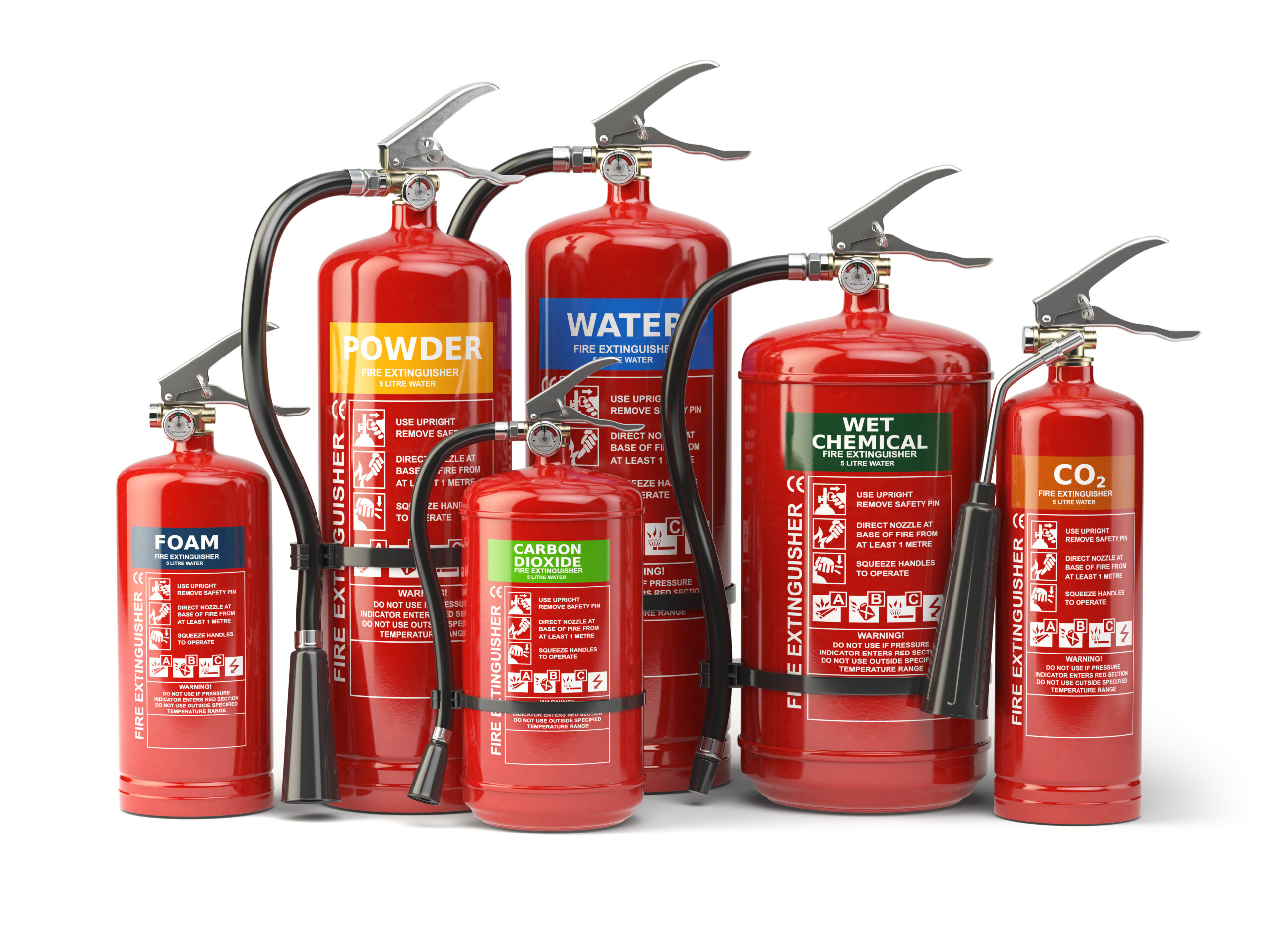Fire extinguishers are portable equipment that emits jets of water, gas, foam, or other materials to put off fire. They’re crucial equipment for fire safety systems and help protect business operations, employees, and visitors from danger in case of a fire outbreak. Since fire extinguishers are hardly used, their maintenance is quickly forgotten. While they’re hardly used, they’re effective in putting off fires, so it makes sense to service them regularly to ensure they’re in good working condition.
But how often should fire extinguishers be serviced? All portable fire extinguishers should be serviced annually by a qualified technician. Your business or company should also schedule monthly inspections to identify potential problems in your extinguishers and address them before they escalate further. Also, some manufacturers’ dates point out when to service your fire extinguisher. Most of them need to be serviced after five or six years.
In this post, we’ll look at the three different requirements and recommendations that fire extinguisher service needs to be tested and scheduled.
Monthly Fire Extinguisher Visual Inspections
Fire extinguishers must regularly be inspected by the user or user’s representative. The frequency of the inspections shouldn’t be less than a month; and where necessary, they should be conducted more frequently. Monthly inspections are easy and quick to perform and shouldn’t consume much of your time. However, they’re essential and effectively point out potential issues in your fire extinguishers. This helps solve the problems before they develop into significant accidents, and this helps save lives, business, and the building.
Some of the things to look out for during the monthly inspections are:
- Signs of damage, which include corrosion, leakage, or indications that the equipment has been tampered with
- Weighing or lifting the extinguisher to ensure it feels full
- Ensuring that the pressure gauge in the extinguisher is in place, it should point to the green
- Check for a wobbly or broken handle, missing locking pins or seals, and a blocked, cracked, or torn nozzle
- For wheeled extinguishers, make sure the tires are in good condition
- Ensuring the fire extinguishers are seen, and their view isn’t obstructed
- Ensuring nothing is missing, like the tags and extinguisher labels
- Checking the date of the previous professional inspection
Monthly fire extinguisher inspections are necessary for several reasons like ensuring the user conducts fire extinguisher testing to confirm it’s charged and operational. Ensure the extinguisher is still in its designated location and that no damage has affected the equipment. Ensuring no obstructions limits the equipment from easy access. Monthly inspections should be recorded well as professionals will require the information when conducting a thorough service to the equipment.
Yearly Fire Extinguisher Inspections
A qualified fire extinguisher technician should conduct a comprehensive inspection of your fire extinguisher every year to ensure they’re operating to the correct standards. The experts won’t only inspect the extinguisher but will also perform any necessary repairs according to the rules and fire safety guidelines. Every yearly service should be tagged and dated to schedule when the next service will occur. If some repairs are impossible, the fire extinguisher needs to be replaced.
Fire extinguisher technicians won’t only concentrate on the working condition of the extinguisher but will also verify whether it’s positioned in the right place and is fitted correctly on the stand. If not, they’ll help position the extinguisher in a suitable location where it’ll provide adequate protection for any potential hazards available.
The specific steps a technician follows depend on your type of extinguisher and age. Generally, the technician changes the head cap seal, tests the pressure gauge, evaluates the condition of the head cap safety pin, and changes the rings in the valve and hose junction.
Specialists recommend the annual inspections to be done by professional fire protection companies because they have proper training and tools to ensure your fire extinguisher is in good working condition and, at the same time, correct any potential accident situations. However, it’s essential to ensure that the technician or the company conducting the inspection has an independent certification registration organization for fire safety and protection.
The certification helps determine whether the fire protection company or any other technician is competent to deliver fire protection services. Don’t just settle for any fire protection company you come across; ensure the company has a seal of approval. This way, you’ll be sure that the technician you hire is experienced and has undergone proper training that meets all the fire protection standards. Lastly, remember you’re required by law to have a record of all inspections, servicing, maintenance, and repairs you perform on the fire extinguisher.
Extended Fire Extinguisher Service
Finally, your fire extinguisher requires extended servicing. It can be conducted every five or ten years, depending on the type of extinguisher. For instance, water, powder, or foam extinguishers require extended servicing every five or six years. The most crucial parts of this type of extended service include valve overhaul and servicing, discharge tests, refilling and re-pressuring, and all services included in the yearly service.
For CO2 extinguishers, extended service can be conducted every ten years. These types of fire extinguishers have different regulations because of their high-pressure cylinders. The essential parts of this type of extinguisher include replacement of the main valve, hydraulic testing or stretch test, and being sent to an approval center for testing.
Just like annual servicing, extended serving should be conducted by an accredited technician who has proper training and experience to service a fire extinguisher reliably, safely, and correctly. The technician conducts the extended service via a detailed and in-depth inspection of everything included in the basic or yearly service.
After ten years, it makes sense to buy new fire extinguishers rather than trying to repair disfigured ones, but they only need servicing if they’re in good condition. However, once your extinguishers reach 20 years, they should all be replaced irrespective of their condition. No one should take chances when it comes to fire protection and safety.
Conclusion
There you go! That’s everything you need to know on how often you should inspect, service, and maintain your fire extinguishers. Proper servicing and maintenance not only fulfill the legal requirements but also ensures the safety of your business, employees, visitors, and the building. We hope the above information will help you better understand how to maintain your fire extinguishers.



















